Komentarze / Pytania (114)
![]() Susanne Bang Hansen napisała::
Susanne Bang Hansen napisała::
Strikker str xl. Efter mønstret har jeg 351 masker( som jeg skal have), når jeg så deler i forstyk, ærmer og ryg, så har jeg 13 masker for meget????
03.07.2021 - 23:52Odpowiedź DROPS Design :
Hei Susanne. Litt usikker på hvor det blir feil hos deg, men du skal strikke 50 masker rett (= ½ bakstykket), sett de neste 76 maskene på en tråd til erme, legg opp 12 nye masker på pinnen (= i siden under ermet), strikk 99 masker rett (= forstykke), sett de neste 76 maskene på en tråd til erme, legg opp 12 nye masker på pinnen (= i siden under ermet), strikk de siste 50 masker rett (= ½ bakstykket). Om man ser bort fra de 24 ny maskene stemmer maskeantallet. 50+76+99+76+50= 351 masker. Kankje du har blandet noen størrelser? mvh DROPS design
05.07.2021 - 14:54
![]() Astrid napisała::
Astrid napisała::
Det står ingen plass i mønstret at kastene skal strikkes vridd,dette bør stå hvis det erslik det skal være
03.07.2021 - 15:31
![]() Bodil napisała::
Bodil napisała::
Så hvis jeg forstår det riktig da, skal omgang 6 strikkes bare rettmasker.
29.06.2021 - 10:56Odpowiedź DROPS Design :
Hej Bodil. Ja det stämmer. Mvh DROPS Design
29.06.2021 - 11:15
![]() Bodil napisała::
Bodil napisała::
Hei. Jeg har kommet til omgang 6 hvor den mørke trekant-symbolet er. Er det over 2 omganger, eller er det på omgang 7? Skjønner ikke helt dette.
29.06.2021 - 07:07Odpowiedź DROPS Design :
Hej Bodil. Det er på omgang 7. Mvh DROPS Design
29.06.2021 - 08:01
![]() Lene napisała::
Lene napisała::
A2, etter siste stjerne(som skal være 7m) viser diagrammet 3m på linjene over. Hvordan? Jeg sitter med altfor mye masker!!! Ser ut som dette er et problem som gjentar seg, er det noen som ser på dette?
27.06.2021 - 11:37Odpowiedź DROPS Design :
Hei Lene, Stjerne symbol betyr at du skal strikke 7-7-7-9-9-9 masker i samme masken, som gir deg de økte maskene på linjen over (se symbolforklaring over diagrammene). Håper dette hjelper og god fornøyelse!
28.06.2021 - 09:07
![]() Bodil napisała::
Bodil napisała::
Jeg lurer på om kastene skal strikkes vridd vrang eller vridd rett?
27.06.2021 - 01:22Odpowiedź DROPS Design :
Hei Bodil, Hvis du har en åpen rute i linje over kastet skal det strikkes vridd rett, hvis det er en rute med kors, skal det strikkes vridd vrang. God fornøyelse!
28.06.2021 - 09:10
![]() Ida Eline Sørensen napisała::
Ida Eline Sørensen napisała::
Hei. Jeg forstår ikke hvordan jeg skal lese diagram A2. Skal en og en av rapportene strikkes? Hvordan henger de sammen? Skal det være noen masker med kun rett, strikkes ett og ett diagram eller flere samtidig? Dette var en forvirrende oppskrift. Takk for svar på forhånd. Strikker forresten str.s.
17.06.2021 - 21:48Odpowiedź DROPS Design :
Hei Ida Eline, Du strikker A.2 i ett, så første omgang: 3 vrang, 1 rett, 3 vrang og 1 rett. Gjenta dette på omgangen. Når du er på omgang 3, skal du strikke 3 masker i stjernemasken (som forklart rett over diagrammene) slik at du kan strikke alle maskene i omgang 4. Håper dette hjelper og god fornøyelse!
18.06.2021 - 07:17
![]() Roswitha Zu Dritten napisała::
Roswitha Zu Dritten napisała::
Die letzte Frage habe ich mir selbst bewntworten können. Hab zu schnell aufgegeben. Jetzt läuft es. Aber trotzdem herzlichen Dank für die schnelle Hilfe. Habt einen schönen Freitag
11.06.2021 - 15:22
![]() Roswitha napisała::
Roswitha napisała::
Herzlichen Dank für die schnelle Antwort. Uns schon hab ich ein neues Problem. Wie stricke ich weiter? Ich beginne nach Vorlage 1re-2li-1re-2 li-1re. So, dann stricke ich aus der einen Masche 9 Maschen. Dann bleiben aber noch so viele Maschen übrig. Ignoriere ich die und fahre mit dem Muster einfach weiter? Entschuldigung, wenn ich so viel nachfrage hab bestimmt 30 Jahre nicht mehr richtig gestrickt.
11.06.2021 - 15:05Odpowiedź DROPS Design :
Liebe Roswitha, nach der 3. Reihe in A.2 haben Sie 8 Maschen zugenommen und 2 Maschen abgenommen (= 10 M - 2 + 8= 16 M in jedem A.2), bei der 4. Reihe in A.2 stricken Sie: 1 re, 2 li, 1 re, 2 li, 1 re (= die 1. Hälfte von A.2) und jetzt stricken Sie die 9 Maschen rechts = 16 Maschen. Bei der 5. Reihe nehmen Sie 2 M in die 1. Hälfte ab = 14 M, bei der 7. Reihe nehmen Sie noch 2 M ab = 12 M und bei der 9. Reihe nochmal = 10 M, bei der 11. Reihe nehmen Sie dieses Mal in die 1. Hälfte (Sternchen) zu und in die 2. Hälfte ab. Hoffentlich kann es Ihnen helfen. Viel Spaß beim stricken!
11.06.2021 - 17:18
![]() Roswitha napisała::
Roswitha napisała::
Hallo zusammen, ich verstehe die Anleitung zu A2 nicht. Die ersten 2 Reihen sind verstanden. 3. Reihe macht mir Probleme. Wie verstehe ich die Sternchenanleitung im Diagramm? Ich stricke 9 Maschen und hole aus der 10 9 heraus und dann? Arbeite ich das die Reihe durch? Was bedeutet dann die Angabe 4 x arbeiten? $ x auf die Reihe verteilt? Der Antwort entgegensehend verbleibe ich mit freundlichen Grüßen für ein schönes Wochenende Roswitha
11.06.2021 - 12:49Odpowiedź DROPS Design :
Liebe Roswitha, so stricken Sie das Sternchen: die 10. Masche von A.2 insgesamt 9 Mal stricken (1 Masche recht, dann (1 Umschlag, dieselbe Masche noch mal rechts stricken) und von (bis) insgesamt 4 Mal stricken) = es sind jetzt 9 Maschen auf der rechten Nadel aus der 1 Maschen auf der linken Nadel - die von der linken Nadel fallen lassen - dieses Video, zeigt wie man 7 Maschen so strickt, in Ihrem Fall sollen Sie noch einmal von *bis* wiederholen um 9 Maschen zu bekommen. Kann es Ihnen helfen? Viel Spaß beim stricken!
11.06.2021 - 14:10
Swing by Spring Top#swingbyspringtop |
|||||||||||||||||||||||||
 |
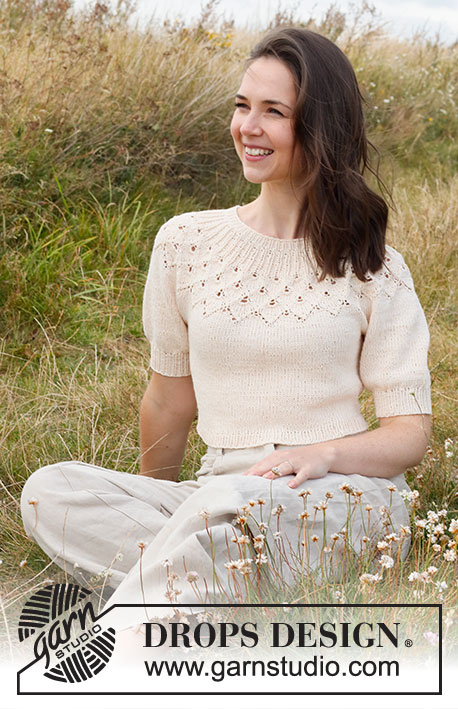 |
||||||||||||||||||||||||
Sweter na drutach przerabiany od góry do dołu, z zaokrąglonym karczkiem ściegiem ażurowym, wzorem liści i krótkimi bufiastymi rękawkami, z włóczki DROPS Belle. Od S do XXXL
DROPS 222-32 |
|||||||||||||||||||||||||
|
------------------------------------------------------- WYKORZYSTYWANE TECHNIKI: ------------------------------------------------------- ŚCIEG FANTAZYJNY: Patrz schematy A.1 i A.2. Patrz schemat odpowiedni dla rozmiaru. ZAMYKANIE OCZEK (boki swetra): Zamknąć 1 oczko z każdej strony nitki markera następująco: przerabiać aż zostaje 3 oczka przed nitką markerem i przerobić 2 oczka razem na prawo, 2 oczka prawe (nitka marker jest między tymi 2 oczkami), zdjąć 1 oczko jak do przerobienia na prawo, 1 oczko prawe, przełożyć oczko zdjęte nad przerobionym oczkiem. WSKAZÓWKA DO ZAMYKANIA OCZEK: Aby zamykane oczka nie ściągały robótki, do zamykania można użyć grubszych drutów. Jeżeli mimo to brzeg jest nadal zbyt ścisły, wykonać 1 narzut za ok. każdym 4-tym oczkiem i zamykać narzuty jak zwykłe oczka. ------------------------------------------------------- ROBÓTKĘ ROZPOCZYNAMY TUTAJ: ------------------------------------------------------- SWETER – SKRÓCONY OPIS ROBÓTKI: Wykończenie dekoltu i karczek są przerabiane od góry do dołu, na okrągło od środka tyłu. Następnie dzielimy karczek na tył/przód i rękawy. Tył/przód są przerabiane od góry do dołu, na okrągło na drutach z żyłką. Rękawy są przerabiane na okrągło na drutach pończoszniczych/krótkich drutach z żyłką, od góry do dołu. WYKOŃCZENIE DEKOLTU: Na drutach z żyłką nr 3 nabrać 100-100-104-108-112-120 oczek włóczką Belle. Przerobić 1 okrążenie na prawo. Dalej przerabiać ściągaczem = 1 oczko prawe/1 oczko lewe. Gdy wysokość ściągacza wynosi 2-2-3-3-3-3 cm, zacząć przerabiać na drutach z żyłką nr 4. Umieścić 1 marker na początku okrążenia, na środku tyłu, długość karczku będzie mierzona od tego markera! KARCZEK: Przerabiać schemat A.1 na okrągło (= 25-25-26-27-28-30 motywów po 4 oczka). Po przerobieniu schematu A.1, jest 200-200-208-216-280-300 oczek. Długość robótki od markera wynosi teraz 4-4-4-4-6-6 cm. Dalej przerabiać schemat A.2 na okrągło (= 25-25-26-27-28-30 motywów po 8-8-8-8-10-10 oczek). ZACHOWAĆ TAKIE SAMO NAPRĘŻENIE NICI JAK W PRZYPADKU PRÓBKI! Po przerobieniu schematu A.2, jest 275-300-312-351-392-420 oczek, a długość robótki od markera wynosi ok. 14-14-14-17-19-19 cm (tj. 16-16-17-20-22-22 cm od rzędu nabierania oczek). Przerabiać dżersejem, aż długość robótki od markera wynosi 18-20-21-23-25-27 cm. Teraz podzielić robótkę na tył/przód i rękawy. Przerobić kolejne okrążenie następująco: przerobić 38-42-44-50-58-63 oczka prawe (= ½ tyłu), zdjąć 62-66-68-76-80-84 następne oczka na nitkę na rękaw, nabrać 8-8-12-12-12-12 oczek (= bok, pod rękawem), przerobić 75-84-88-99-116-126 oczek prawych (= przód), zdjąć 62-66-68-76-80-84 następne oczka na nitkę na rękaw, nabrać 8-8-12-12-12-12 oczek (= bok, pod rękawem), przerobić 38-42-44-50-58-63 ostatnie oczka na prawo (= ½ tyłu). Kończyć tył/przód i rękawy oddzielnie. OD TEGO MOMENTU MIERZYĆ STĄD! TYŁ & PRZÓD: = 167-184-200-223-256-276 oczek. Umieścić 1 nitkę marker na środku 8-8-12-12-12-12 nowych oczek pod każdym rękawem (= oznaczenia boków swetra). Jest teraz 83-92-100-111-128-138 oczek na przód i 84-92-100-112-128-138 oczek na tył. Przesuwać nitki markery w miarę postępu robótki; wskazują miejsca, gdzie będą zamykane oczka. Przerabiać na okrągło, dżersejem. Gdy długość robótki od jej podziału wynosi 3 cm, zamknąć 1 oczko z każdej strony każdej nitki markera – patrz ZAMYKANIE OCZEK (= zostają zamknięte 4 oczka). Zamykać tak samo w sumie 4-4-4-4-5-5 razy co 2 cm = 151-168-184-207-236-256 oczek. Przerabiać na okrągło dżersejem, aż długość robótki od jej podziału wynosi 15-15-16-16-16-16 cm – lub ma inną długość wg potrzeb (zostaje ok. 2 cm do końca). Przerobić 1 okrążenie na prawo, w tym samym czasie równomiernie dodając 23-26-28-31-36-38 oczek = 174-194-212-238-272-294 oczka. Dalej przerabiać na drutach z żyłką nr 3 ściągaczem (1 oczko prawe/1 oczko lewe) na okrągło przez 2 cm. Zamknąć oczka tak jak schodzą z drutu – patrz WSKAZÓWKA DO ZAMYKANIA OCZEK. Całkowita długość swetra od ramienia wynosi ok. 39-41-43-45-47-49 cm. RĘKAWY: Wziąć z powrotem 62-66-68-76-80-84 oczka z nitki z jednej strony robótki i przełożyć je na druty pończosznicze/krótkie druty z żyłką nr 4 i nabrać 1 oczko w każde z 8-8-12-12-12-12 nowych oczek nabranych z boku pod rękawem = 70-74-80-88-92-96 oczek. Przerabiać na okrągło dżersejem, aż długość rękawa od podziału robótki wynosi 12-11-10-8-7-5 cm (zostaje ok. 5 cm do końca, przymierzyć sweter i przerabiać do odpowiedniej długości). Przerobić 1 okrążenie na prawo, w tym samym czasie równomiernie zamykając 16-16-14-14-14-14 oczek = 54-58-66-74-78-82 oczka. Dalej przerabiać na drutach pończoszniczych nr 3. Przerabiać na okrągło, ściągaczem = 1 oczko prawe/1 oczko lewe przez 5 cm. Zamknąć oczka tak jak schodzą z drutu – pamiętać o WSKAZÓWCE DO ZAMYKANIA OCZEK! Długość rękawa od podziału robótki wynosi ok. 17-16-15-13-12-10 cm. Drugi rękaw wykonać tak samo. |
|||||||||||||||||||||||||
Objaśnienia do schematu |
|||||||||||||||||||||||||
|
|||||||||||||||||||||||||
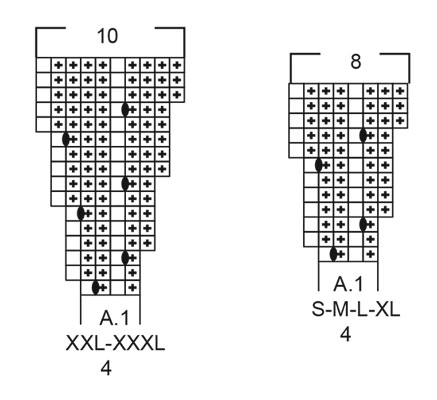 |
|||||||||||||||||||||||||
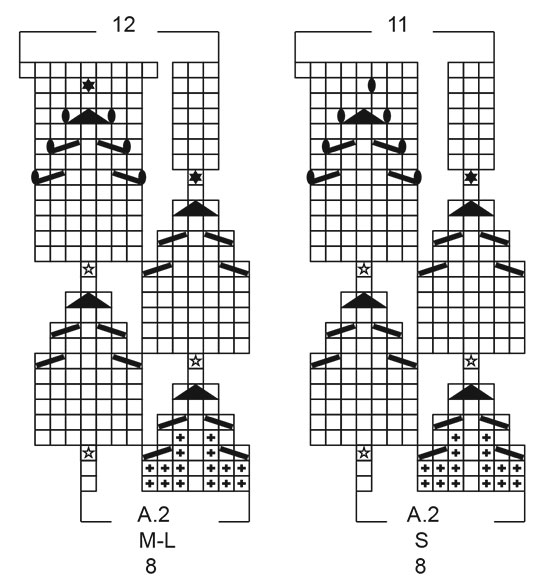 |
|||||||||||||||||||||||||
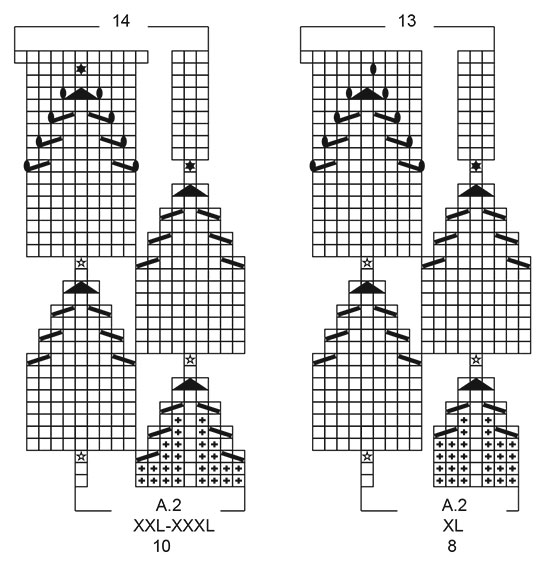 |
|||||||||||||||||||||||||
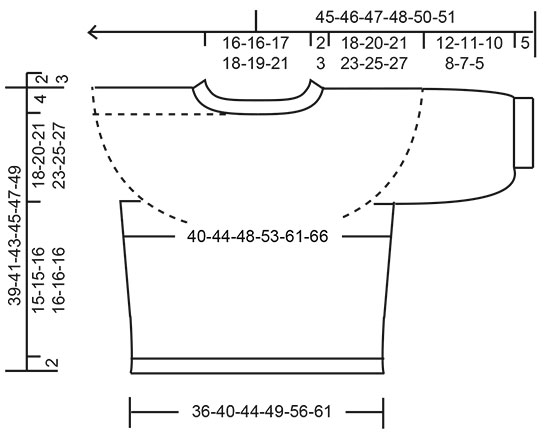 |
|||||||||||||||||||||||||
Skończyłaś ten wzór?Otaguj swoje zdjęcia #dropspattern #swingbyspringtop lub prześlij je do #dropsfan gallery. Potrzebujesz pomocy w związku z tym wzorem?Zobacz 30 instrukcje video, sekcję Komentarze/Pytania i jeszcze więcej, wchodząc na stronę wzoru na garnstudio.com © 1982-2025 DROPS Design A/S. Wszelkie prawa zastrzeżone. Ten dokument, w całości, jest chroniony prawem. Zobacz co możesz robić z naszymi wzorami na dole każdego wzoru na naszej stronie. |
|||||||||||||||||||||||||







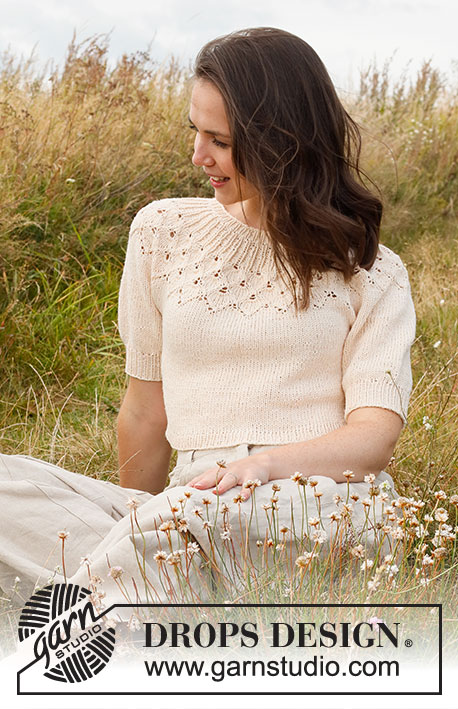
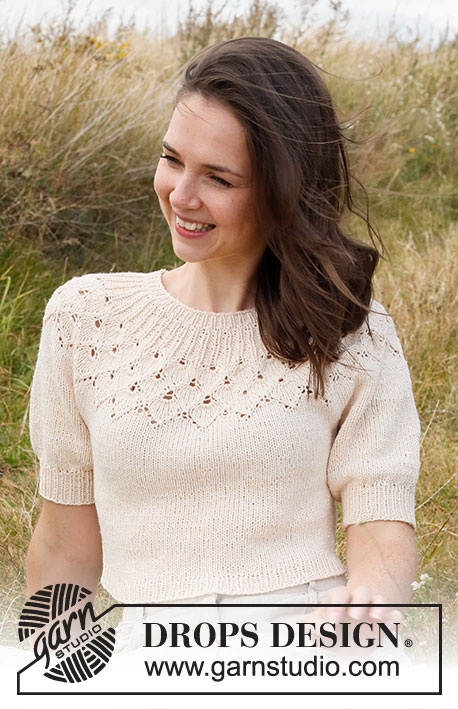
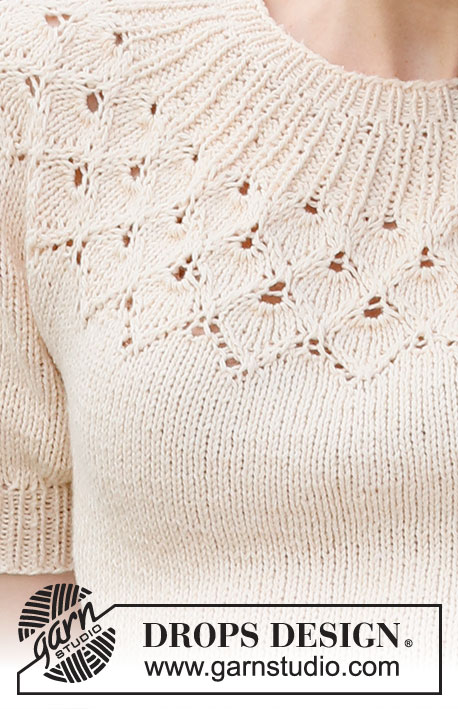
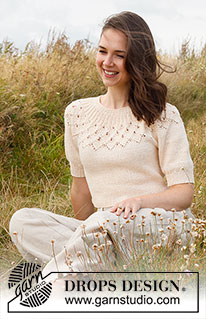
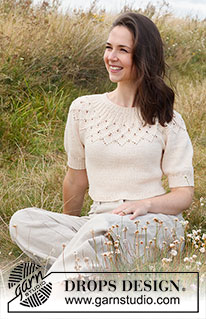
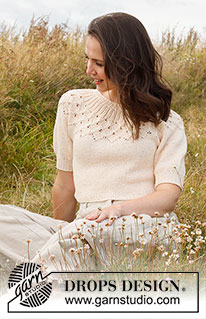
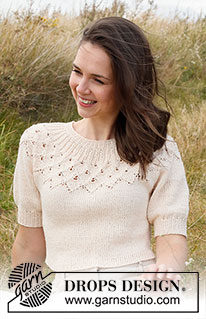
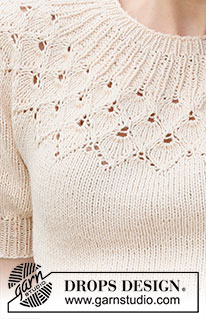







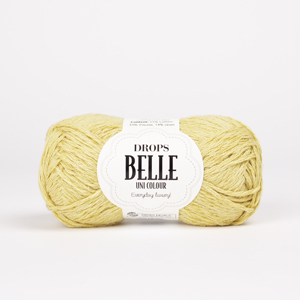
























































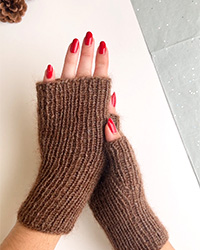

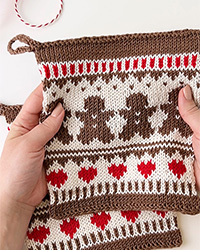
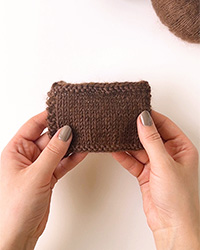


Dodaj komentarz do modelu DROPS 222-32
Chcielibyśmy się dowiedzieć co masz do powiedzenia o tym wzorze!
Jeśli chcesz zadać pytanie i szybko uzyskać odpowiedź, upewnij się, że została wybrana właściwa kategoria w formularzu poniżej. Pola obowiązkowe są oznaczone *.